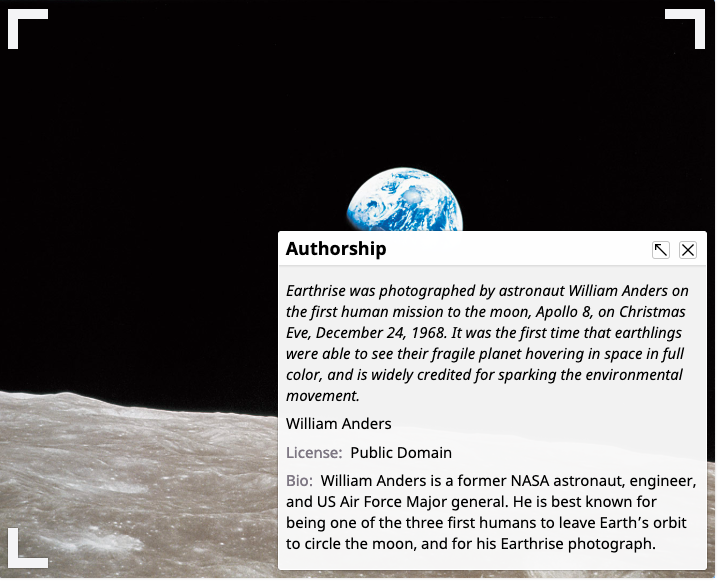PART I / PART II / PART III
Trends & Systems: introducing Four Corners
Fred Ritchin often cites Marshall McLuhan’s observation that “one thing about which fish know exactly nothing is water,” lacking the perspective to know the environment in which they are immersed. Concurrently, visual storytellers, publishers, and audiences in our industry need to distance themselves outside of what they already know and address the shifting tides as a community. From colleagues in the media industry to viewers tuning into media outlets, who are now competing with social media platforms acting as the go-to source for news— the search for authentic content and sources have become arguably the most important goal of our times. The media industry needs to take a moment to identify, discuss and analyze its role from an ethical, editorial, economic and business standpoint. We also undeniably need to face the role technology plays in media as well as photography's fallen status as an object of proof.
Fred Ritchin has addressed many of these challenges from proposing a "not-a-lens" icon, founding the online-magazine PixelPress in 1999 (now primarily an archive) to introducing the Four Corners Project, which he originally proposed over fifteen years, as a means of better utilizing the possibilities of the digital environment.
The Four Corners Project ( fourcornersproject.org ) aims to empower photographers, image makers, and publishers in the brave new world of digital media. The tool itself works to expand on the photographic caption, through adding contextualizing information to the images published online and offering an alternative solution to the traditional didactic caption that merely iterates what the photograph is already showing. As a result, the reader is able to find out more about what is referenced in a photograph to foster perspective and credibility.
The contextualizing tool is open-source and free for use by the public. According to the website, the tool allows photographers and publications to add information so that it is embedded in each of the four corners of an image. When a viewer hovers his or her mouse over the image, the Four Corners symbols appear and each corner is then clickable offering contextualizing information to the image: the bottom right corner is for Authorship, allowing the caption, credit, copyright/creative commons, and the photographer’s ethical code to be added; the bottom left is the Backstory; upper left the Related Imagery; and upper right the Links to other websites that may provide more information. This means that when the viewer is looking at any given image, he now has access to more information provided by the photographer or the publication. Adaptable to various types of text and media, once the visual storyteller or publication adds the information to the different fields, the tool automatically generates an embeddable code that you can copy and paste into your website.
It was recently launched in March 2019 with open-source software developed by Corey Tegeler and designed by Fred Ritchin, Perri Hofmann, and Corey Tegeler. Some of the user testings were done by full-time students at the International Center of Photography. Support for the project has come from the International Center of Photography in New York, World Press Photo Foundation in Amsterdam, and the initial version of the software was developed by the Open Lab at Newcastle University in England.Fred Ritchin recently gave a presentation at the inaugural Visura Salon Series at powerHouse Arena in Brooklyn, New York, where he began by recognizing that his interest has always been in, "what can photography do in society to be helpful?” Rather than focusing on the photograph itself, Ritchin is interested in the photograph’s power to promote positive change in the world by being proactive, as opposed to reactive.
He explains: “We so often wait for the apocalypse, we photograph it and we win awards. I would also like to recognize the people who photograph ahead of the apocalypse to try and prevent it or minimize it… You don’t often win the awards but a lot more people may be alive, healthier, and in better shape.”
He is also fully cognizant of the perpetuating identity crisis of the photograph in photojournalism as we move into what he identifies as a “post-photographic world” where the presence of a photograph no longer ensures credibility.
“Digital photography is quantum, it’s not Newtonian,” explains Fred Ritchin. "We need tools that reflect the potentials of the medium, not try to limit the medium to old and arguably problematic forms of production and publication." Through the Four Corners Project, Ritchin hopes to empower visual storytellers, media publications and viewers with a tool that offers context to specific imagery.
Written by Clary Estes
Editor: Adriana Teresa Letorney
Published April 10, 2019
BACK
About Fred Ritchin: Fred Ritchin, who first proposed the Four Corners idea in 2004 as keynote speaker at the annual World Press Photo Awards Ceremony in Amsterdam, is Dean Emeritus of the School at the International Center of Photography. Previously he was Professor of Photography and Imaging at New York University’s Tisch School of the Arts, where he also taught in the Interactive Telecommunications Program (1991-2014). Ritchin created the first multimedia version of the New York Times in 1994-95. The website that he then created for the New York Times on the Web with photographer Gilles Peress in 1996, “Bosnia: Uncertain Paths to Peace,” was nominated by the New York Times for a Pulitzer Prize in Public Service, but immediately rejected by the Pulitzer Committee because it was not on paper. Ritchin has written three books on the future of imaging: In Our Own Image: The Coming Revolution in Photography (Aperture, 1990), After Photography (W. W. Norton, 2008), and Bending the Frame: Photojournalism, Documentary, and the Citizen (Aperture, 2013). His 1984 piece for the New York Times Magazine, “Photography’s New Bag of Tricks,” was the first major article on the potential impacts of the digital revolution on photography and related imaging. He has also co-authored and contributed essays to several dozen books. In 1999 Ritchin co-founded PixelPress, an online publication experimenting with new methods of storytelling, and collaborating with humanitarian organizations such as UNICEF, WHO, UNFPA, Crimes of War, and others on media projects including books, exhibitions, and Web sites promoting human rights. Previously he was picture editor of the New York Times Magazine, executive editor of Camera Arts magazine (Ziff-Davis), and founding director of the Photojournalism and Documentary Photography one-year full-time educational program at the International Center of Photography. He was recently given the John Long Award in Ethics by the National Press Photographers’ Association for his contributions to ethical behaviors in photojournalism.








